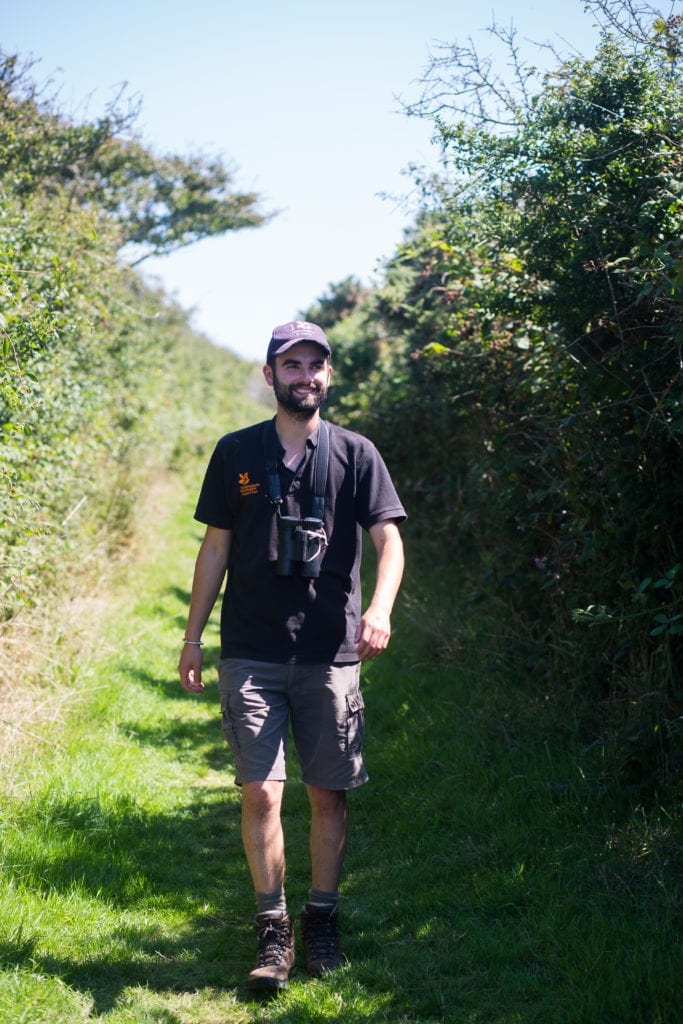Endangered birds are continuing to flock in their thousands to National Trust farmland in Pembrokeshire, according to the latest data from the conservation charity.
Results from the Trust’s biggest winter farmland bird survey in Wales suggest that more than 28,000 birds are now benefitting from its nature-friendly farming approach, with 13 red and 12 amber list species of conservation concern sighted.
Nationally, farmland birds are one of the fastest declining groups of birds in the UK, with a 54 per cent loss since 1970, largely due to modern intensive agriculture, fewer hay meadows and the removal of hedgerows.
This is the second year the Trust has completed the monitoring across its tenanted farms in the north of the county between November and February. Completed by a team of 25 volunteers across 300 hours, the survey reviews how farmland bird species are faring over winter, when they can be particularly vulnerable due to a loss of feeding habitats.
As well as indicating population health, the findings help the charity measure the success of its land management changes for wildlife as it continues to work in partnership with tenants to deliver more for nature.
Changes already introduced include resting fields for fallow, leaving some fields and margins unsprayed and sowing wild bird cover crops to provide a vital food source through the winter.
The resident birdlife is continuing to show its appreciation, yellowhammer numbers recorded during the work have quadrupled in the past year from just five in 2018-19 to 20 in 2019-20. Red-listed starlings and skylarks also saw a steady increase compared to the same time last year, up by 32 per cent and 60 per cent respectively.
But one of the wettest winters on record and succession of Atlantic storms appear to have had an impact too. Lapwing and snipe both saw a large fall in numbers, the former down from 946 individuals in 2018-19 to just four in 2019-20.

Speaking about the survey results, area ranger James Roden said: “It’s really encouraging to see that our nature-friendly farming approach is continuing to help thousands of farmland birds in Pembrokeshire.
“Working with our tenants, we have made adjustments to our land management at a number of farms to include cereal stubbles, fallow and sowing bird cover crops to provide crucial food sources over the hard winter months.
“We have seen some immediate nature gains and promising figures for the likes of yellowhammer, skylark and starling, and by continuing the survey on an annual basis we will be able to build up a longer-term picture about the winter farmland bird population on our land.
“We can’t be complacent, there is still much more work to be done to help protect these birds.
“We will continue to work in partnership with our tenant farmers to support sustainable farming and create bigger, better places for wildlife.”
Folkestone, Llanferran, Llanunwas, Pwll Caerog, Trefrane, Treginnis, Treheinif, Trehill, Treseisyllt, West Hook and Ynys Barri are the 11 farms that were surveyed. A total of 28,036 birds and 59 species were counted across the farms, covering approximately 1,200 acres.
Monitoring involved walking a set route through several fields on each farm and recording all birds identified visually or by sound and their location, with every site surveyed three times during the process.
The work aligns with the Trust’s 2025 ambition for at least 50 per cent of its farmland to be nature-friendly, with protected hedgerows, field margins, ponds, woodland and other habitats allowing plants and animals to thrive.
